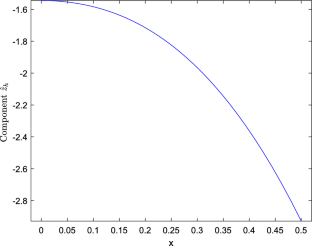Computational and Applied Mathematics ( IF 2.998 ) Pub Date : 2024-04-24 , DOI: 10.1007/s40314-024-02730-6 José Luis Gracia , Martin Stynes

|
A two-point boundary value problem whose highest-order derivative is a Riemann–Liouville–Caputo derivative of order \(\alpha \in (1,2)\) is considered. A similar problem was considered in Gracia et al. (BIT 60:411–439, 2020) but under a simplifying assumption that excluded singular solutions. In the present paper, this assumption is not imposed; furthermore, the finite difference method of the BIT paper, which was proved to attain 1st-order convergence under a sign restriction on the convective term, is replaced by a piecewise polynomial collocation method which can give any desired integer order of convergence on a suitably graded mesh. An error analysis of the collocation method is given which removes the above sign restriction and numerical results are presented to support our theoretical conclusions. The tools devised for this analysis include new comparison principles for Caputo initial-value problems and weakly singular Volterra integral equations that are of independent interest. Numerical experiments demonstrate the sharpness of our theoretical results.
中文翻译:

奇异解的RLC分数阶导数两点边值问题的配置方法
考虑一个两点边值问题,其最高阶导数是阶数\(\alpha \in (1,2)\) 的黎曼-刘维尔-卡普托导数。 Gracia 等人也考虑了类似的问题。 (BIT 60:411–439, 2020)但在排除奇异解的简化假设下。在本文中,没有强加这一假设;此外,BIT论文中的有限差分法被证明可以在对流项的符号限制下实现一阶收敛,该方法被分段多项式配置法所取代,该方法可以在适当的分级上给出任何所需的整数阶收敛。网。给出了配置方法的误差分析,消除了上述符号限制,并给出了数值结果来支持我们的理论结论。为此分析设计的工具包括 Caputo 初始值问题的新比较原理和独立感兴趣的弱奇异 Volterra 积分方程。数值实验证明了我们理论结果的清晰度。



























 京公网安备 11010802027423号
京公网安备 11010802027423号